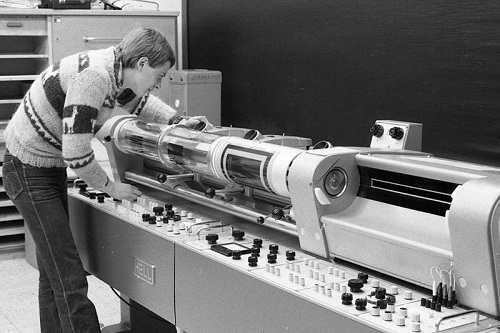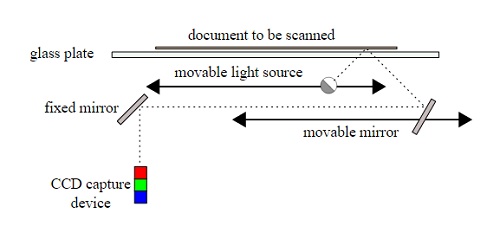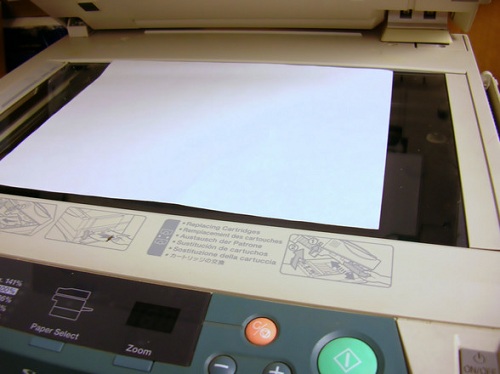How Does a Scanner Work on a Printer?

In 1957, Russell A. Kirsch and his team of developers built the first functioning digital scanner and used it to scan a photo of Kirsch’s baby son, Walden. Since then, scanners encompassing every imaginable utility have been put into the hands of the average consumer or business owner, and it’s changed our lives.
While you may already own a scanner, you might not know how it actually works. Learning how a scanner works on a printer can help you understand more about how modern businesses integrate technology into the workplace, and how they use these devices in our everyday lives. If you’re curious about the ins-and-outs of scanning knowledge, read on to learn more about the advantages of scanning, how scanners work on a point-by-point basis, and how the scanning technology developed.
How Does a Scanner Improve Work on a Printer or Computer?
If you’ve never been faced with the prospect of buying a scanner, you may be wondering what advantage a printer would have over a digital camera. Mainly, scanners have the added benefit of being completely enclosed and controlled image capturing environments. There’s no risk of scanning an image that’s poorly focused and you never have to consider motion blur and improper lighting. Often, scanners even have auto correction effects that improve aspects of images and documents before you even begin the editing process. When scanning, dust removal and crookedness correction, for example, are automatically applied to documents.
While there are a number of benefits to using a scanner, there are many more customization options available, making the process a little more complex. There’s always the right combination of speed, image quality, and portability to ensure your images are uploaded quickly and correctly.
How Does a Scanner Actually Work on a Printer?

Flatbed scanners grew to prominence in the 1980s, but were relegated to low resolutions until the late 1990s, when personal computer use was at an all-time high for the 20th century. The ability of a scanner to produce higher resolution images was also improving, as the scanner was able to cram more DPI, or dots per inch, into each scanned document. New demand for digitizing documents presented an opportunity to improve the methodology of the scanner like never before.
While scanning technology is constantly improving, currently, scanners typically go through these steps once a document is placed face down on the glass surface:
- A light sensor array attached to the scan head inside of the machine passes under the document, while a light inside illuminates the document.
- Many mirrors and lenses pass the light from the scanned document back into the light sensory array.
- A lens splits the colors of the light and the charge is measured by the scanner.
- Those measurements are converted to binary, so it can be read by a computer and interpreted as an image.
- The image is printed onto an attached printer or uploaded into the computer.
A scanner is generally built with a lid that is equipped with a pad for reflecting the most amount of light possible over the document to ensure that every aspect of the text or image is captured. The brightness of the light hitting the sensor determines how much of an electrical charge is produced.
Xerography vs Scanning
While the process of the scanner sounds a lot like a copy machine, the process used in xerography, or photocopying, is different in many ways. While a normal printer will apply ink to a medium in order to represent the scanned image, photocopiers use a method of dry electrostatic printing. Instead of ink, copy machines, including laser printers, use a dry, powdered material known as toner to create images.
- A copier machine converts an image to a coated drum inside by giving it an electrostatic charge.
- The drum then rotates and toner is attracted to the electrostatic charge.
- As the drum continues to rotate, it transfers that toner onto blank paper.
- The paper is run through a heat roller to fuse the toner the paper, creating a copy of the original scan.
Scanning Images vs Documents

Scanning photos requires much more sensitive technology than scanning regular documents. While there are all-purpose scanners that exist for photos and regular text documents, usually photo scanning is best left to a dedicated photo scanner.
Film and negatives aren’t properly perceived by every kind of scanner, and often a scanner doesn’t have the DPI (dots per inch) or PPI (pixels per inch) settings necessary to create high resolution images. Sometimes, photos scanned through a dedicated photo scanner can be cleaned up and color corrected before the file is even on your computer screen.
Types of Scanners
While a flatbed scanner may be the most well-known, there are many other types of scanners suited to specific purposes. In addition to the flatbed scanner, you can also find portable scanners and sheetfed scanners.
Flatbed Scanners
The flatbed scanner is usually immobile and takes up a lot of space, but their low price makes them attractive to the average consumer. Since a scanner often works on a printer in tandem, many varieties of printers come with an attached scanning bed. If you need a scanner for basic copying or uploading functions, those that are equipped with a printer are the most cost-effective.
Portable Scanners
Portable scanners are exactly what they sound like: scanners you can easily transport in a suitcase or computer bag. Their scanning power is greatly diminished, however, as their size requirements permit only the most basic and necessary functions. They’re often much more expensive as a tradeoff for their convenience.
Beyond their portability, many of these scanners are also captivating due to their additional features. Some allow you to scan directly to your computer through a USB connection, while others have memory card slots that let you scan without your laptop. Some newer models even offer Wi-Fi connectivity to store or preview scans on your phone or tablet. If your business necessitates a lot of travel and you need to have constant access to a scanner, this is an ideal model to consider.
Sheetfed Scanners
Sheetfed scanners are smaller than flatbeds, but not considered portable. Their popularity is due to the speed in which they can scan documents, as instead of placing one sheet on the surface at a time, this scanner allows for multiple pages to be simultaneously queued up. Since this feeding process reduces resolution, this type of scanner is best suited for textual documents rather than pictures.
Where to Find Affordable Ink for Scanners
While you may have found a scanner that best suits your needs and your budget, you still have to consider your ink and toner cartridges. High-quality, affordable ink and toner cartridge refills aren’t easy to find, and using inferior replacements can create problems in how a scanner works with your printer.
With 1ink.com, you can browse a vast selection of ink and toner cartridges that spans over 1,500 high-quality cartridges—at nearly 50% off the OEM price. Visit 1ink.com to find refills for your scanner and check our blog often for more tips and tricks about new technological developments.
